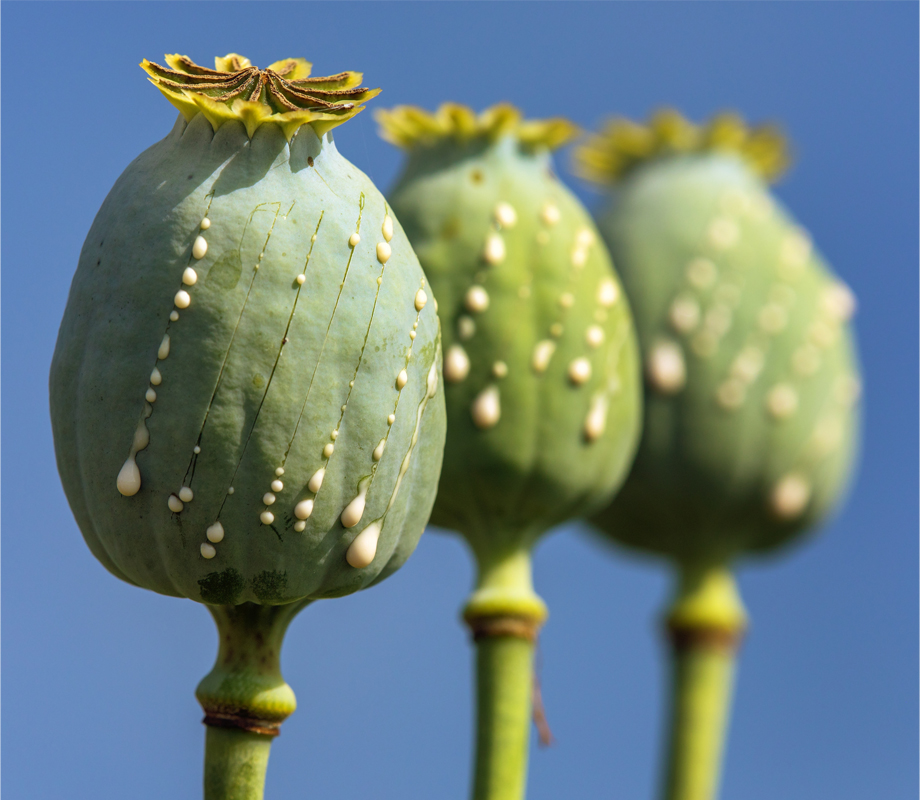
How modern medicine harnesses the power of nature
Kate Hore RNutr(Animal), R.Anim.Technol (Cert). Head Nutritionist at NAF
Have you ever reached for an aspirin to help with pain relief? If the answer is yes, then you already know a little of the power of plants. From the ubiquitous miracle drug of the Western world, aspirin, to the latest research in major killers such as heart disease and cancer, herbs and plant extracts have always been, and are still, at the heart of medicinal knowledge.
Man’s, and animal’s, relationship with plants and how that impacts health goes back a very long way, making modern synthetic medicines look very much like the new kid on the block. It is thought that land plant evolution dates from around 500 Million years ago, approximately the same time as the evolution of land animals, and the two have co-existed in synergy ever since. Man came along much, much, later, but quickly learned how to harness those botanical benefits, and the history of medicinal plants dates back for thousands of years. One of the earliest examples being the Kahun Papyrus, dating back to 1900 BC. The oldest known medical record of Ancient Egypt, the Kahun Papyrus included a veterinary section with herbal formulae for treating a wide range of animals from dogs, birds, bulls and even fish, using much of what we would still recognize in herbal health. For example the later Edex Papyrus (1500 BC) included over twenty herbal formulae containing garlic, and also included aloe vera and honey for wounds. While elsewhere the Romans were known to use opium, from poppies, as a pain killer – a modern drug that has been known for millennia in many different civilisations.
In contrast, the modern pharmaceutical industry really only dates from the second half of the 19th, and the early 20th century – meaning researchers often have a lot of catching up to do compared to nature’s attributes and man’s knowledge of those.

Anti-inflammatories and Pain Relief
To look at anti-inflammatory action and pain relief, we must start with the humble aspirin, known by so many of us. The active element of aspirin is salicylic acid, extracted from willow bark (Salix alba), and it’s use can be traced back to the Ebers Papyrus where chewing on willow twigs was advised to alleviate pain. Now usually synthetically produced, we can all be grateful to the power of plants for our relief and comfort over the years. Not to stop there, like so many natural elements, salicylic acid is now proving to be multi-functional and it’s use in reducing the risk of heart attack, and even as an anti-cancer drug, is being investigated.

However, when it comes to pain relief, it isn’t all about aspirin. Morphine is a very strong pain-reliever, still commonly prescribed, often after surgery and for broken bones, and extracted from poppies; while Aescin, an active ingredient of the horse chestnut tree (Aesculus hippocastanum), is used in pharmacology to reduce blood pressure and as an anti-inflammatory. The cannabis plant (Cannabis sativa) gives us Dronabinol and Cannabidiol, while capsicum peppers are a source of capsaicin, all used as pain relievers.
Current Research
According to the World Health Organisation, globally the most common causes of death are heart disease, stroke, chronic obstructive pulmonary disease (COPD), respiratory infections, Alzherimer’s and other dementias. Diarrhoea, cancer and diabetes are all also recognized as major killers. There are treatments originally derived from plants and nature available for almost all of them. These incredible therapeutic plants include our much loved snowdrop (Galanthus nivalis) which gives us galantamine, used in the treatment of Alzheimer’s, and milk thistle (Silybum marianum) which gives us silymarin, used in liver disease, as just two examples.
Cancer Fighting
When it comes to treatment of cancer the natural world again offers powerful remedies that could save millions of lives. Research in the 1950s found that the Madagascan periwinkle plant (Catharantus roseus), used traditionally to treat diabetes, was also found to have anti-cancer properties, with derived actives now used in the treatment of childhood leukaemia. That discovery has also given us drugs such as vinblastine, which can kill rapidly dividing cells like cancer cells. The challenge being scaling up to commercial viability, but ongoing research has now revealed the whole plant genome, so paving the way for a synthetic version with much wider reach.

Developing Knowledge
Although modern drug development can now use a range of technologies in developing new treatments, plant based remedies are still important and a very relevant part of current research. In recent decades, around half of all newly approved drugs are either directly or indirectly derived from natural products. Modern developments include drugs like Arteether, derived from Artemisia annua and used to treat malaria, Apomorphine, another poppy development used in Parkinson’s disease, and Tiotropium, a derivative of belladonna (Atropa belladonna) and used in people with COPD.
Often developments of new drugs start with traditional use, and research into the herb and its activities in their simple, natural form. From that, extractions and derivatives can be fine-tuned to the final pharmaceutical, but it all starts with the plant itself. There are many thousands of interest, with approximately 70,000 species have been screened for their potential as medicines, and many thousands still be properly examined. We certainly can’t cover them all in one short article.
Conclusion
It is clear to see that the use of herbal actives is not only the foundation and history of modern medicine, but remains an important and viable part of the future of pharmacology. Harnessing the power of plants for our, and our animal’s, health is not a cosy nod to tradition, but a powerful, evidence-based, future-focused medical approach.
Selected References:
NAF © 2024 | NAF is a trading name of Greencoat Limited, registered in England & Wales. Greencoat Ltd - Registered address: Weston Centre, 10 Grosvenor Street, London, W1K 4QY. Registered Number: 1560 108. Registered in England & Wales.Number: 1560108 VAT Registration Number: 378 9295 80